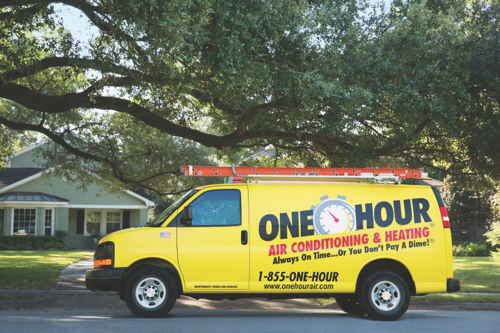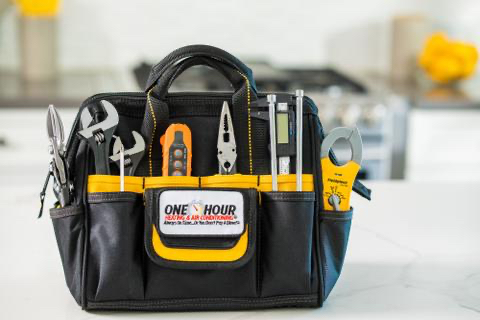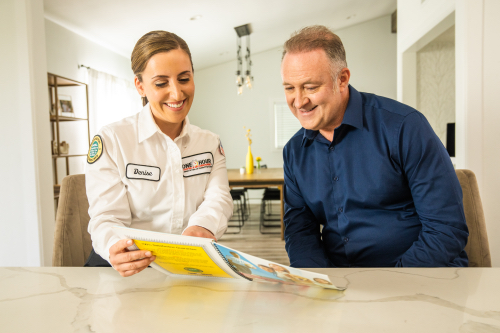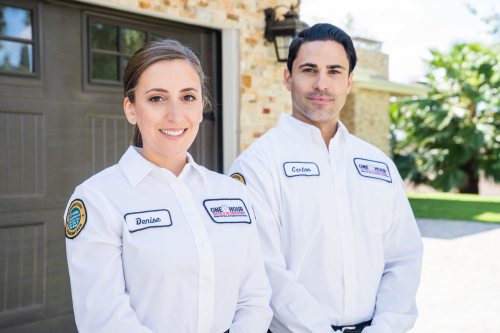Clear Skies Indoors: Test Air Quality In Your Home
Hey there, fellow home dwellers! Ever walked into your house and thought, “Hmm, something feels off”? Well, it might not be your imagination – it could be your air talking!
Yep, you heard me right. The air in your home has a lot to say about your health and comfort. So, grab a cup of coffee (or tea, I don’t judge), and let’s chat about how you can test air quality in your home. Trust me, it’s more exciting than it sounds!
Why Should You Care About Your Home’s Air? (Spoiler: It’s Pretty Important!)
Okay, let’s get real for a second. We spend a ton of time indoors, especially these days with more people working from home. (Shoutout to all my fellow pajama-wearing, home-office warriors!) But here’s the kicker – the Environmental Protection Agency (EPA) says that indoor air can sometimes be more polluted than outdoor air. I know, right? Mind. Blown.
Think about it, your home is like a cozy bubble where you eat, sleep, binge-watch your favorite shows, and now, maybe even work. Shouldn’t that bubble be as clean and healthy as possible? Poor air quality can lead to all sorts of not-so-fun stuff like allergies, asthma flare-ups, and even long-term health issues. Yikes!
But don’t panic! Knowledge is power, my friends. By understanding what’s floating around in your air, you can take control and turn your home into the healthy haven it’s meant to be. It’s like being the superhero of your indoor environment. Cape optional, but highly recommended for dramatic effect.
The Usual Suspects: What’s Messing with Your Air?
Alright, detective, it’s time to identify our culprits.
Your home’s air might be harboring some sneaky characters:
- Dust Bunnies and Their Crew: These aren’t just cute names for the fluff under your bed. Dust, pet dander, and pollen are like the party crashers of clean air.
- Mold (The Uninvited Houseguest): This funky fungi loves damp spots and can cause all sorts of respiratory issues. Plus, it’s just gross.
- Chemical Cocktails: Everyday products like cleaners, air fresheners, and even that new furniture smell can release Volatile Organic Compounds (VOCs). Fancy name, not-so-fancy for your health.
- The Invisible Intruder (Carbon Monoxide): This odorless, colorless gas is the ninja of air pollutants. Super dangerous and sneaky – not a welcome guest.
Knowing these troublemakers is half the battle. Now, let’s talk about how to catch them in the act!
DIY Detective Work: Simple Tools to Test Air Quality
Good news! You don’t need a PhD in environmental science to test air quality in your home.
There are some pretty nifty gadgets out there that can give you the lowdown on your home’s atmosphere:
- Air Quality Monitors: These little devices are like the Swiss Army knives of air testing. They can measure particulate matter (that’s the fancy term for tiny airborne particles), CO2 levels, and VOCs. Some even connect to your phone – because in 2024, doesn’t everything?
- Humidity Meters: Too much moisture? Hello, mold city. Too dry? Welcome to Chapped Lip Central. These meters help you find that Goldilocks zone of just the right humidity.
- Carbon Monoxide Detectors: These are non-negotiable, folks. They’re like smoke detectors but for an invisible, odorless gas that can be lethal. Install them, check them, and love them.
Get Your MacGyver On: DIY Air Tests
Feeling crafty? There are some pretty cool ways to test air quality:
- The Candle Test: Light a candle near windows and doors. If the flame dances like it’s at a disco, you might have drafts letting in outdoor pollutants.
- The Baking Soda Humidity Check: Leave out a dish of baking soda in suspect areas. If it clumps up, you’ve got excess moisture. Time to invest in a dehumidifier!
- The Plant Patrol: Some houseplants are natural air purifiers. If they start looking sad, your air might need some TLC.
Remember, these tests aren’t exactly CSI-level accurate, but they can give you a good starting point.
When to Call in the Pros (Because Sometimes, You Need a Superhero)
Look, I’m all for DIY, but sometimes you need to bring in the big guns. If you’re experiencing persistent health issues, weird smells, or visible mold, it’s time to call a professional service to test air quality in your home.
These pros have all the fancy equipment to detect a wide range of pollutants, including the scary stuff like radon (a radioactive gas that can cause lung cancer – no thanks!). They’ll give you a detailed report that’s more thorough than your high school chemistry lab write-up.
Pro tip: If you’re buying a new home, consider getting a professional air quality test. It’s like a background check for your future air!
Decoding the Air Quality Report: What’s It All Mean?
Okay, so you’ve got your test results. Now what?
Don’t worry, I’ll break it down for you:
- PM2.5 and PM10: These are fancy terms for tiny particles. PM2.5 are the super small ones that can get deep into your lungs. If these numbers are high, it’s time to step up your cleaning game or invest in an air purifier.
- VOC Levels: High numbers here mean you might want to cut back on chemical-heavy products or improve ventilation. Maybe it’s time to switch to that all-natural cleaning spray your hippie cousin keeps raving about?
- Humidity: Aim for 30-50%. Too high? Hello, mold. Too low? Goodbye, skin moisture.
- CO2 Levels: High CO2 can make you feel sluggish. If it’s elevated, it’s time to let in some fresh air or get some plants (bonus: they make great coworkers for home offices).
Remember, these numbers are your air’s way of telling you what it needs. Listen to it!
Time to Clean Up Your Act (and Your Air)
Alright, you’ve done the tests, you’ve got the results – now it’s action time! Here are some ways to give your air a makeover:
Ventilation is Your Friend: Open those windows! Let the fresh air in and the stale air out. It’s like a spa day for your home.
- Invest in Air Purifiers: These gadgets can remove particles and allergens from the air. Look for ones with HEPA filters – they’re like bouncers for air pollutants.
- Go Green with Cleaning: Switch to natural cleaning products. Your nose (and lungs) will thank you.
- Declutter and Deep Clean: Less stuff means less dust. And regular cleaning keeps those sneaky pollutants at bay.
- Maintain Your HVAC System: Change those filters regularly! It’s like giving your home a fresh pair of lungs.
Plants: Nature’s Air Fresheners
Who knew that your leafy friends could be air quality superheroes?
Certain plants are amazing at cleaning the air:
- Spider Plants: These are like the overachievers of the plant world. They’re great at removing formaldehyde and other nasties.
- Snake Plants: These tough guys can survive almost anything and are excellent at filtering out bedroom pollutants. Perfect for those of us who aren’t exactly plant whisperers.
- Peace Lilies: Not only do they look fancy, but they’re also fantastic air purifiers. Just keep them away from curious pets!
Bonus: Talking to your plants is totally normal. I do it all the time. They’re great listeners and never judge your outfit choices.
The Future is Fresh: What’s Next in Air Quality Tech?
Hold onto your hats, because the future of air quality monitoring is pretty exciting:
- Smart Air Monitors: Imagine a device that not only can test air quality but also talks to your other smart home gadgets. “Hey, air’s looking a bit stuffy. Mind opening a window, smart home?”
- Wearable Air Quality Trackers: Soon, you might be able to check your air quality exposure throughout the day. It’s like a Fitbit, but for air!
- AI-Powered Predictions: Artificial Intelligence might soon predict air quality issues before they happen. It’s like having a crystal ball for your home’s atmosphere.
The goal? To make clean air as easy and automatic as possible. Because let’s face it, we’ve all got enough on our plates without having to constantly worry about air quality.
Wrapping It Up: Breathe Easy, Live Happy
Whew! We’ve covered a lot of ground, haven’t we? From sneaky pollutants to high-tech solutions, managing your home’s air quality is quite the adventure. But here’s the bottom line: taking care of your indoor air is one of the best things you can do for your health and comfort.
Remember, every breath you take at home should be a good one. So go ahead, be the hero of your indoor environment. Test air quality, improve, and breathe easy. Your lungs (and your future self) will thank you!
